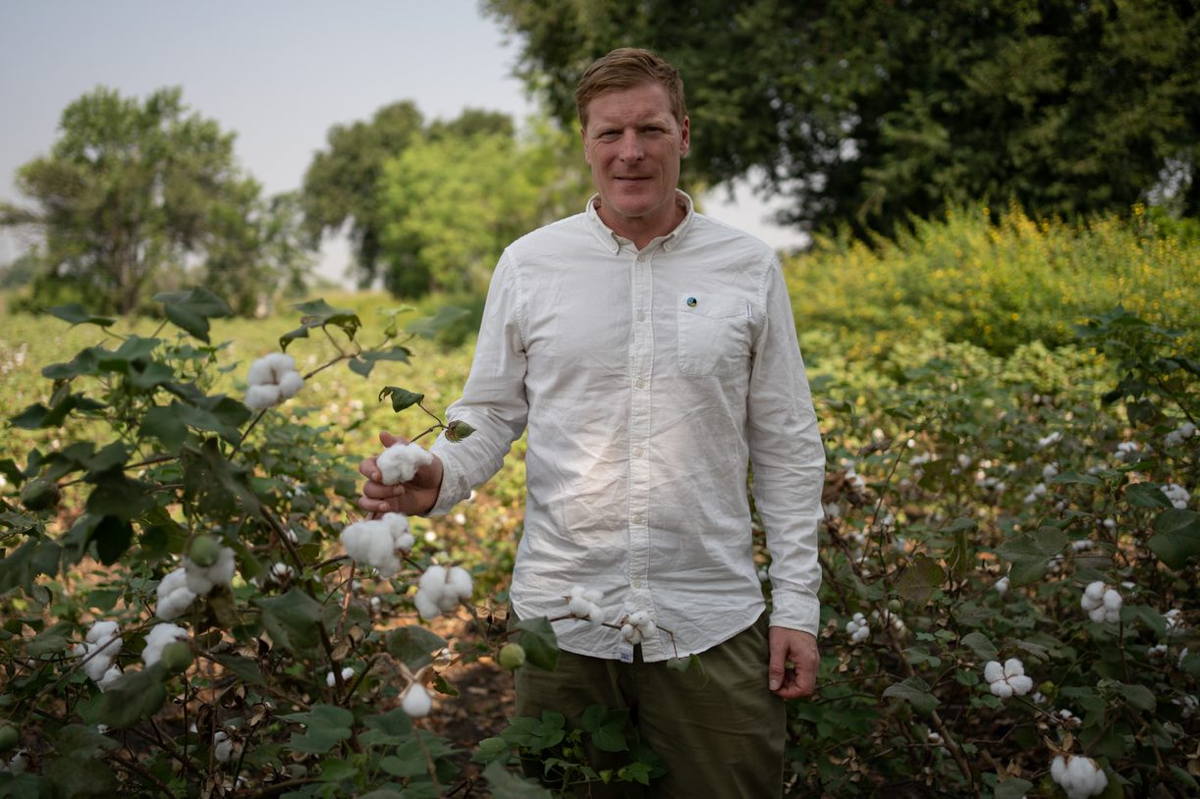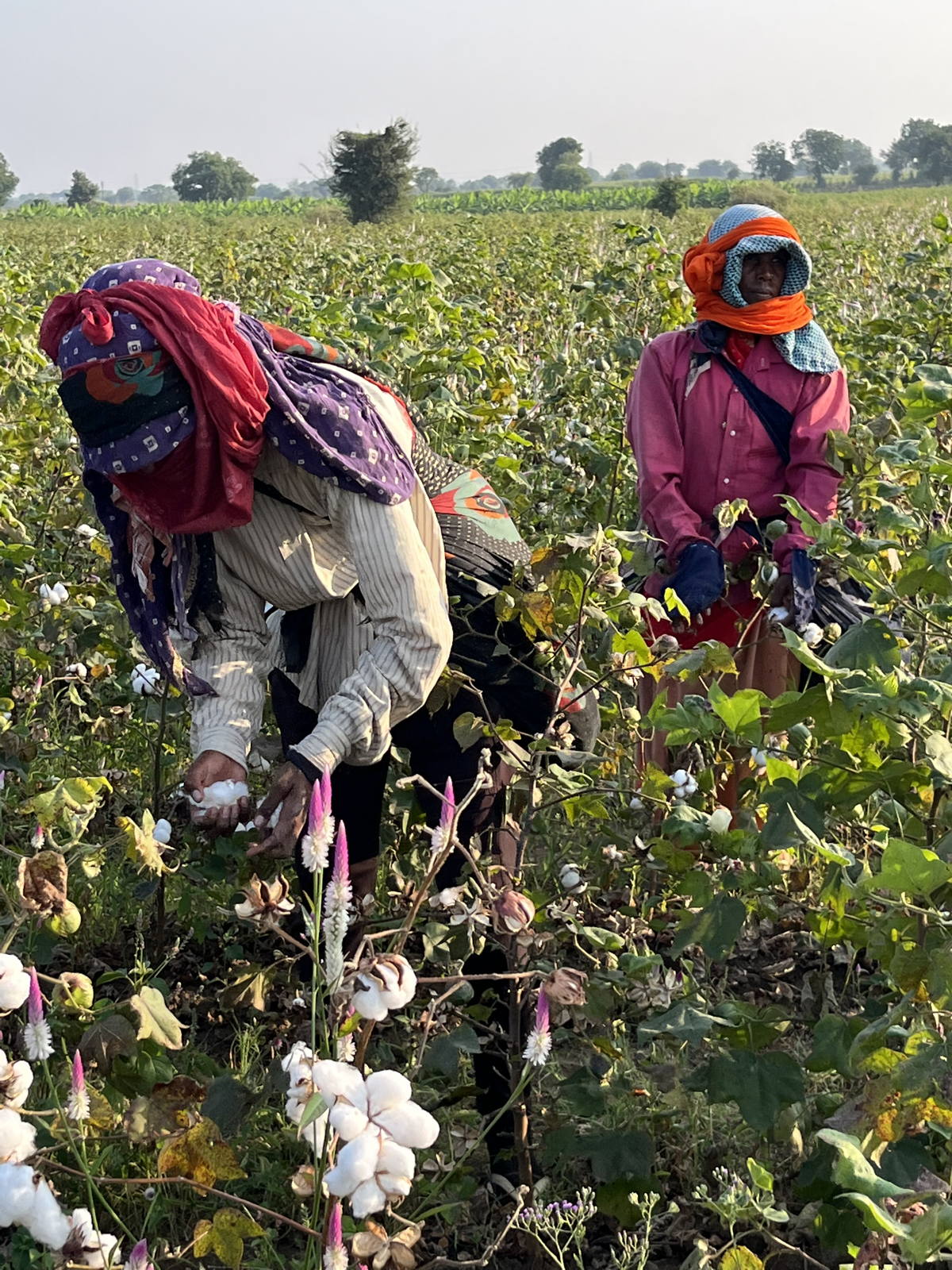
Leaders’ Opinions: Is BCI Cotton Killing Organic Cotton Farming? | Johan Graffner Writes…
Is BCI Cotton Killing Organic Cotton Farming? Johan Graffner, CEO at Dedicated Brand, shares his opinion about BCI program scandal.
Is BCI cotton killing organic cotton farming?
I was shocked when my friend Sreeranga told me the story about his dear friend, a cotton farmer in Gujarat, India who after a long time of growing debt to the wholesaler of seeds, fertilizers and pesticides finally made the decision to commit suicide. Apparently this is not uncommon among farmers using the big brand’s seeds. By using these seeds you commit yourself to using the same brand’s fertilizers and fossil based synthetic fertilizers and many become so heavily indebted that they only see death as the way out. Drinking the same poisonous fertilizers to end it all.
When you see that the product you are going to buy is made of BCI cotton, do you believe it is a good choice from an environmental perspective? From an ethical perspective? From an economical perspective? Or do you see that BCI is a somewhat meaningless label, fooling consumers to believe they are buying the better choice?
BCI claims that the cotton produced under its umbrella is using less pesticides, giving farmers better living standards and safer chemical use. However, no independent study has been able to verify these claims.
Cotton is people’s most preferred clothing fiber and one of the world’s largest commodities. Cultivating cotton provides livelihoods for 100 million households, of which 90% are in lower-income countries. In addition, another 350 million people support cotton production and basic processing by working in transportation, ginning, baling, and storage. A single metric ton of cotton provides jobs for five people on average, often in some of the world’s most impoverished regions, which adds up to around 100 million families across the globe. Cotton sustains a significant number of people worldwide, contributing to their economic well-being and livelihoods.
Monsanto, known for its genetically engineered (GE) cotton seeds, has had a significant market share in the cotton seed industry. In some cotton-producing countries, Monsanto’s market share of cotton seeds has been reported to be about 80-90 percent. However, it’s important to note that these figures can vary by country and over time. Monsanto’s GE cotton, introduced in 1996, was designed to protect itself from pests like bollworms and reduce the need for chemical pesticides3. As cotton is treated with more chemicals than any other crop, this sounds great, but the bollworm adapted and again, more pesticides are needed. In fact, while cotton farming occupies only 2.5 percent of the world’s farmland, it accounts for 16 percent of global insecticide use. A study from 2022 show that the pesticide usage in India and Pakistan has not been reduced at all, despite using the Monsanto seeds and the BCI program.

“A study from 2022 show that the pesticide usage in India and Pakistan has not been reduced at all, despite using the Monsanto seeds and the BCI program.”
The BCI label which is a multi-stakeholder program initiated by H&M in 2009, was allegedly created to improve the lives of farmers and minimize the environmental impact of chemical cotton farming. These farmers all need to use the Monsanto cotton seeds to be able to sell it as BCI cotton.
Quickly many giant cooperations such as IKEA, Lindex, Kappahl, Gina Tricot, Best Seller, Inditex, Levi´s joined in on the program and today BCI cotton accounts for more than 22% of the worlds cotton production. The standards set by BCI are very forgiving on the brands and farmers: brands can use the BCI label as long as only 5% of their cotton is produced by BCI farmers as long as the brand commits to bring the percentage up to 50% in 5 years. BCI cotton has zero traceability, mainly due to the use of a mass balance system. This effectively means that that the cotton used by these brands in their products, which they gladly label as sustainable, might be conventionally farmed. There are no demands or accountability on the BCI cotton farmers to reduce the usage of chemicals, rather they should just try to use less chemicals and more efficient water use. Often farmers spray their crop with insecticides up to 7 times before harvesting and this leads to the shocking use of 1 KG of chemicals used to produce 1 KG of cotton.
A big part of the problem is that once you start the chemically driven farming practices, all microorganisms in the soil are killed, so you need to apply more and more fossil based synthetic fertilizers. Farmers can’t just suddenly use less chemicals, because they are farming on dead soil and need to buy and apply the fertilizers in order to get any harvest at all.
Chemicals are expensive and thousands of farmers get indebted, leading to many suicides every day. Not to mention the thousands of cotton farmers who are diagnosed with cancer due to the exposure to the harmful insecticides. This is partly due to the fact that they farm their food crops next to their cotton fields.
Just as stated in the latest BCI Principles v3.0: “Fertilizers can impact soil health, water and biodiversity (for example, through runoff and leaching into the soil profile) and are a key source of GHG emissions. They also are expensive and can have negative impacts on human health.” But instead of banning them and providing alternative methods, they put the responsibility on farmers “decision-making and the implementation of fertilizer application should be well informed”.
Organic cotton, on the other hand uses zero chemicals and has about half the carbon footprint compared to BCI cotton and conventional cotton. GOTS, or the Global Organic Textile Standard, is a leading textile processing standard for organic fibers, including cotton. It encompasses both ecological and social criteria, backed by independent certification of the entire textile supply chain. The cotton is grown without the use of toxic pesticides or synthetic fertilizers. It’s cultivated in a way that supports healthy ecosystems and enriches the soil. This comes with a cost, and brands have to pay an extra premium to finance the transition from conventional farming to organic farming which takes at least 3 years.

For GOTS cotton, the key to success lies in maintaining the integrity of their certification and educating consumers about the true meaning of sustainability in textiles. This educating part is almost impossible, when at the same time; the world’s biggest fashion brands talk about the supposed benefits of BCI. The fact that the name “Better Cotton” sounds very environmental and responsible certainly does not help either. As a result the general public tends to become confused and uninterested in the certifications altogether.
Here comes the biggest problem with the BCI program; BCI is a label which allows all pesticides except the ones that are on blacklists and thereby cause massive harm to the biodiversity, while GOTS doesn´t allow any pesticides at all. Since many of the brands use BCI, because it’s cheaper and sounds responsible, BCI effectively outcompetes the real organic cotton. This has gone on to the extent that GOTS cotton has halved it’s share from 2% to less than 1% of global cotton in the past 10 years. The brands themselves state varying reasons of their use of BCI; H&M usually say that there isn’t enough organic cotton available. This is not true, as the actual demand for GOTS cotton is so low that about half of the harvested cotton is sold as conventional cotton without any premium. Brands can also opt for the “In conversion GOTS cotton” and thereby support farmers in the process of switching to organic farming practices and getting GOTS certified. When asked about the use of BCI cotton in the formidable podcast “The Wardrobe Crisis”, the Levi´s manager Michael Kobori came up with the very questionable answer that organic cotton can be polluted by nearby non-organic cotton fields and thereby be difficult to guarantee. So BCI is easier to control (no doubt since there are hardly any standards to live up to).
A study published in the science magazine Ecological Economics in 2022 show that BCI farmers have experienced very slight health improvements, which is still positive. However, there is no evidence that workers on farms in the BCI program have higher wages or reduced working hours compared to non-BCI farmers. In terms of the carbon footprint of BCI cotton, some independent studies show a slight improvement from conventional cotton and others state that there’s no improvement at all.
BCI are surprisingly weak on human rights too; from the first reports of forced labor in the Chinese Xinjiang cotton industry in 2016, BCI did not act on the matter until 2020. The Uighurs people in Xinjiang have long been detained and forced to work under inhumane conditions. With the end-product being marketed as ‘sustainable’ cotton. By now, up to two million people have been forced into detention and ‘re-education’ camps. In prison-like facilities, the Uighurs are chained to walls for weeks, denied access to sanitation facilities and medicine, and tortured with electric shocks and lashes.
The detainees who survive are transferred for ‘re-education’. Having completed the two year “re-education program”, they are taken to factories where they are forced to produce goods, under the name of several internationally known western brands. Still under constant surveillance. According to the Fair Labor Association, some people might get paid, while others might not. At the same time, it says that some may be able to come and go while others may not. In any of these cases, since the people are not working under their own free will, it is forced labour.

It’s clear that, in order for BCI to have real relevance in terms of reducing cotton farming’s enormous carbon footprint and massive negative impact on biodiversity it needs to adopt real organic farming methods. At the moment it’s not even relevant to compare GOTS cotton and BCI cotton, since GOTS Cotton has about half the carbon footprint of BCI cotton and does not contribute to either cancer deaths or loss of biodiversity.
In later years, some of the progressive real purpose driven responsible brands are starting to use the new “best in class” Regenerative Organic Certified® (ROCTM) cotton, which is GOTS cotton that is regeneratively grown. By using a mix of crops alongside the cotton plants, farmers are able to draw more carbon into the soil. This effectively makes the cotton carbon neutral whilst providing much improved conditions for the local biodiversity as it doesn’t involve mono-crop farming. During some of my many trips to India I have studied the ROC production cycle from cotton seed to readymade garment. It’s really fascinating to see the system in action and it involves quite intricate practices for natural fertilizers and chemical free insect traps. ROC is a certification initiated by the outdoor brand Patagonia and it requires GOTS certification for the rest of the supply chain. The most environmental, low carbon impact and ethical cotton available is ROCTM and Fairtrade certified cotton, whilst BCI is more like conventional chemically grown cotton with miniscule benefits, but a big drawback: It misleads consumers into thinking that they are making a responsible choice.
Is BCI Cotton killing organic cotton? Yes, to a large extent it is.
Words:
Johan Graffner
CEO, Dedicated
Hightlight Image:
© Seven Yvmgtuc via Unsplash






